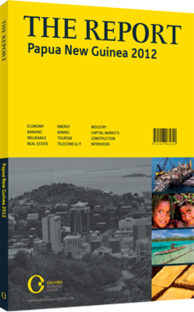Funding the future: A planned SWF will help the government manage a jump in revenues
In February 2012 the Parliament of Papua New Guinea passed a bill to establish a sovereign wealth fund (SWF) for the nation. The fund is the result of more than two years of public and private sector consultation and lobbying by the government. It will be used to manage revenues from ExxonMobil’s PNG liquefied natural gas (LNG) project. The SWF is an integral part of the nation’s long-term development strategy. The fund will help manage, invest and protect revenues derived from the PNG LNG project and other large-scale energy and minerals developments that are currently under way or in the early planning stages.
With production expected to begin in 2014, the LNG project is expected to bring in up to an estimated $150bn over the course of its lifespan, according to the Commonwealth Business Council. A substantial percentage of this will go to PNG in the form of taxes, dividends and other revenue streams. All government revenues from the project will initially be pooled in the SWF, which will be made of two separate entities: the stabilisation fund and the development fund. The former, a long-term offshore fund, will serve as an economic buffer against volatile international commodity prices and periods of financial instability. The latter will be used to support implementation of Vision 2050, PNG’s longterm national development strategy (see analysis).
PRACTICE MAKES PERFECT: PNG has a long history with SWF development. In 1974, a year before the nation gained independence from Australia, PNG’s nascent government launched the Mineral Resource Stabilisation Fund (MRSF). The MRSF was designed to hold revenues from the Panguna Copper Mine, which eventually became the largest open-cut mine in the world and was a major source of revenue for PNG through the 1970s and 1980s. While the MRSF was set up with the best intentions – to support a new country as it got on its feet – it proved to be poorly designed and, consequently, a magnet for corruption and avarice. By the time the fund was closed in 1999 it was worthless, due to both poor management and excess draw-downs.
In designing the new SWF, the government is keen to not repeat previous mistakes. According to Don Polye, PNG’s finance minister, the problem with the MRSF was not “the shortage of funds, but rather the public sector’s poor ability to deliver credible project plans”. With this in mind, Polye, who has played a central role in the development of the new SWF, has worked to include international best practices in the fund. “We will develop our intellectual capital, our technical expertise and skills, our entrepreneurial strengths and corporate abilities,” Polye told local press in October 2011.
A WELL-FUNCTIONING FUND: The SWF has been designed as a two-tier entity, a model meant to help it fulfil its dual role of ensuring stability and funding development. The first tier, known as the stabilisation fund, will serve as the immediate destination for all income from the LNG PNG project and, eventually, other major natural resources projects in the country. The stabilisation fund, and, indeed, the entire SWF, will be managed onshore by an independent board, potentially led by the central bank or another government entity.
According to early drafts of the SWF legislation, the board will work with a leading international financial firm – as yet unnamed – to invest SWF assets offshore, where it will serve to counteract volatile export prices and, when necessary, help stabilise the local economy.
The fund, meanwhile, will be an onshore account used to support PNG’s long-term national development strategy, primarily by financing major infrastructure projects and state-owned enterprises (SOEs).
Deposits from the stabilisation fund into the development fund will be made annually on the basis of projects laid out in PNG’s national development budget. The development fund is initially expected to include two separate accounts. The SOE capitalisation account will fund the government-owned Independent Public Business Corporation, which manages SOEs. The infrastructure account, meanwhile, will be managed by a proposed Independent Infrastructure Authority, meant to oversee strategic infrastructure projects throughout PNG.
You have reached the limit of premium articles you can view for free.
Choose from the options below to purchase print or digital editions of our Reports. You can also purchase a website subscription giving you unlimited access to all of our Reports online for 12 months.
If you have already purchased this Report or have a website subscription, please login to continue.

